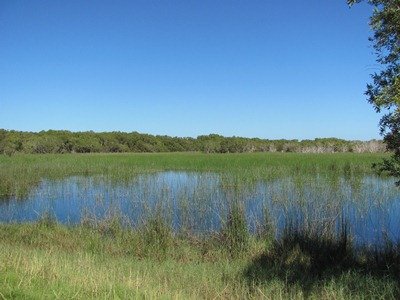
We have finally returned home to Broome after spending most of the year either birding and camping in Queensland or birding around Grant’s work commitments in and around Karratha in the Pilbara district of Western Australia. It is really good to be home and back with our familiar birds and although we have already seen 320 species this year they have been mostly away from home. We are now seeing species we have seen in other locations in our own patch. Our first few days at home were committed to enjoying the birds in our own garden as we pruned back all the native trees which had grown substantially during our tropical wet season. The weather is now hot and dry and the growth will subside giving us more opportunities to bird. Once we had both developed blisters we had the perfect excuse to go and visit a local freshwater clay-pan and check on the bird life present.
The main water body was extremely deep and involved wading through muddy water. The Purple Swamphens were hiding amongst the reed beds and could been seen occasionally as they flew across the reeds. There were surprisingly few ducks, but there are hundreds of Plumed Whistling-Ducks at the Broome Poo Ponds now. The only ducks we saw were Pacific Black Ducks, Grey Teal and Hardheads. There was a remaining Dollarbird that may well migrate to the north again soon, though one has remained during the winter in the past in this location. The Straw-necked Ibis were roosting both on the edge of the flooded clay-pan and high up in the trees.
Straw-necked Ibis
Amongst the dense foliage to the edge of the flooded track there were both White-faced and White-necked Herons and several Glossy Ibis. Across the open bush we discovered several Australasian Pipit and the small pools were drying up fast leaving mud with numerous bird footprints throughout. The bird life will concentrate around each pool as the land dries out over the upcoming months.
Bird prints through the last of the damp mud
At a small pool we discovered a female Black-necked Stork, with her identifying yellow eye and the dragonflies were impressive. There is a saying in Broome that when the dragonflies arrive the rain is over and the weather will change to cooler nights and hot dry days. This definitely appears true in all the years that we have lived in Broome and it was impossible to take a photograph of the Black-necked Stork without including a dragonfly!
Black-necked Stork, Whiskered Tern and dragonfly
The edge of the pool was inhabited by both Black-fronted and Red-kneed Dotterel and these species are very nomadic and not always present at this location. In fact this was the first time we had seen such large numbers of Red-kneed Dotterel here. There was also a pair of Red-capped Plover and they are often seen at ephemeral lakes as well as along our coastline around Broome.
Red-kneed Dotterel
Black-winged Stilt had obviously been breeding recently due to the presence of juveniles amongst the small flock and the Masked Lapwings and Common Greenshank were being vocal as always.
Black-winged Stilt
As we wandered back along the track we were following the tracks of the Bush Stone-curlew, who are more likely to be seen in the evening and eluded us and remain off our year list. We did encounter a Sacred Kingfisher amongst the taller trees and several Double-barred Finch and Variegated Fairywren family units acknowledged our presence to every other bird in the bush!
Sacred Kingfisher
When we visit this location we usually see a large Gould’s Goanna–Varanus gouldii and this specimen is about 1 metre (3 1/4 foot) long. It often surprises you as it scurries off through the bush, but on this occasion it was catching some early morning sunshine after a foggy start to the day. It had climbed up into some long grasses and was quite content to let us pass.
Gould’s Goanna
Now we are almost on top of our gardening commitments we hope to spend more time exploring our local patch once more and seeing the changes that have occurred during the past few months.


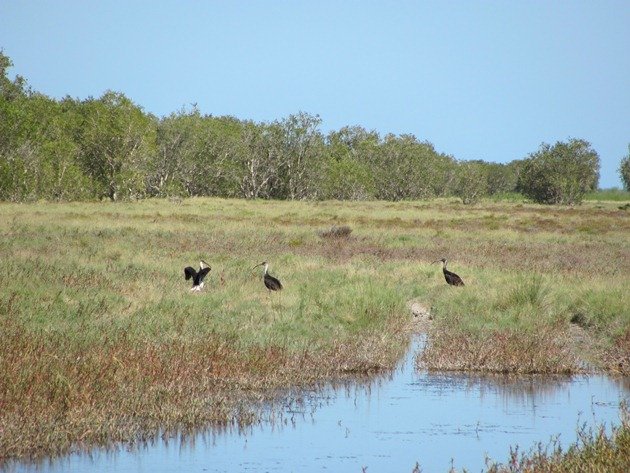
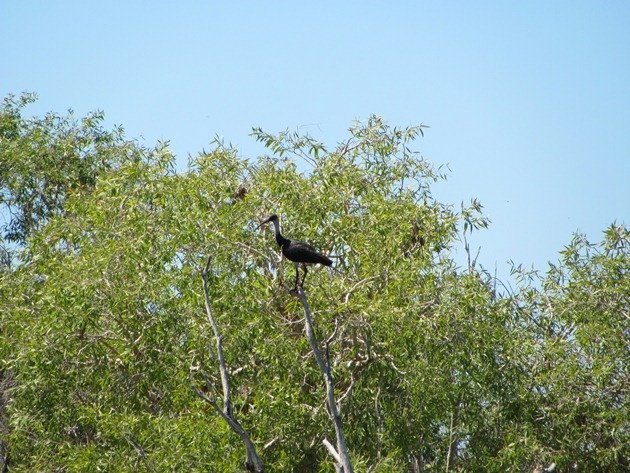
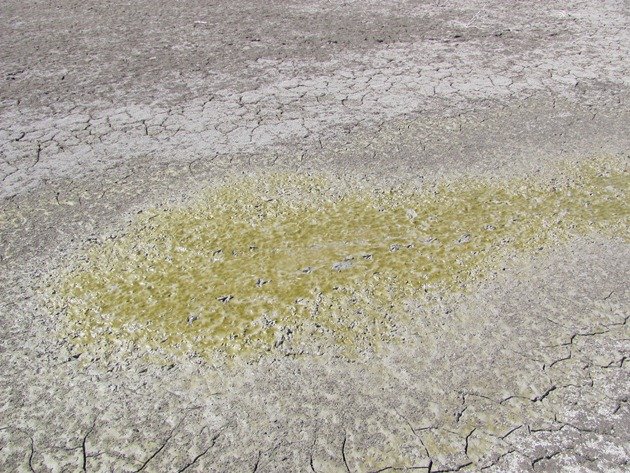
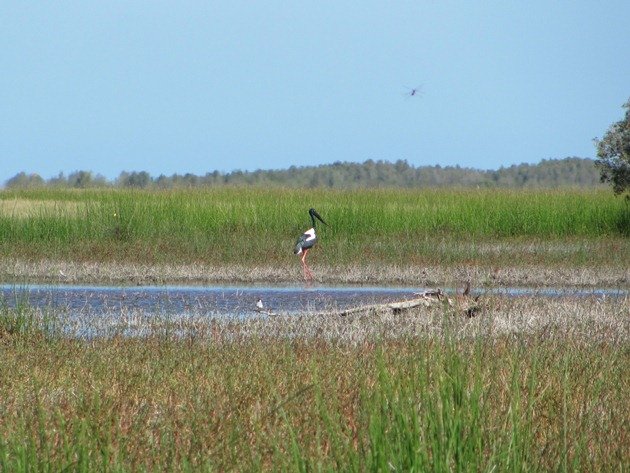
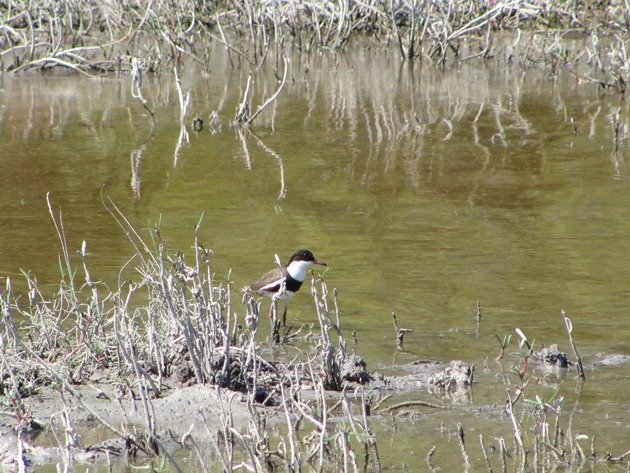
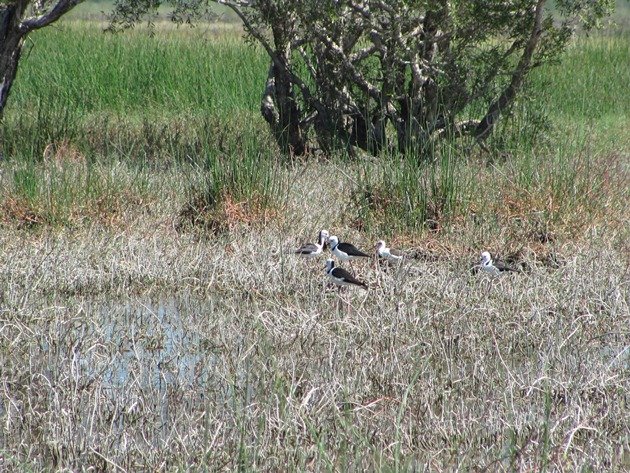
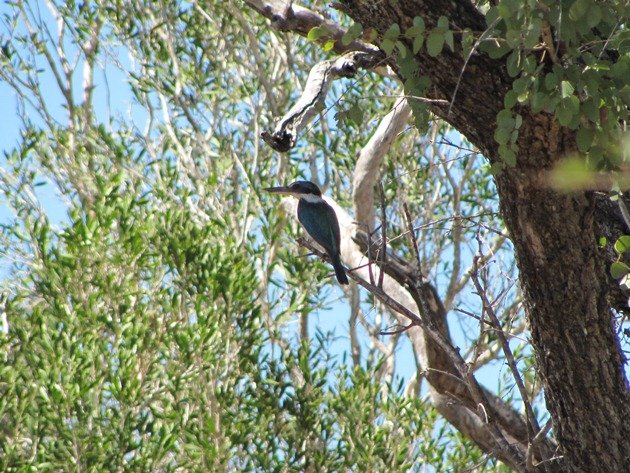
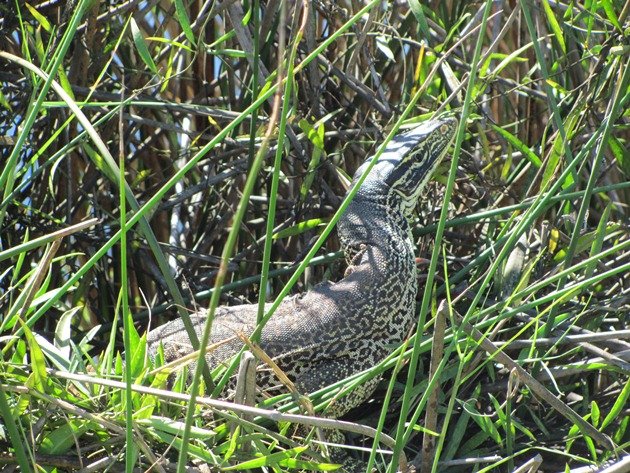











I wish I could have ibises in my trees and Black-necked Storks on my ponds! However, I’m happy not to have Goannas around here.